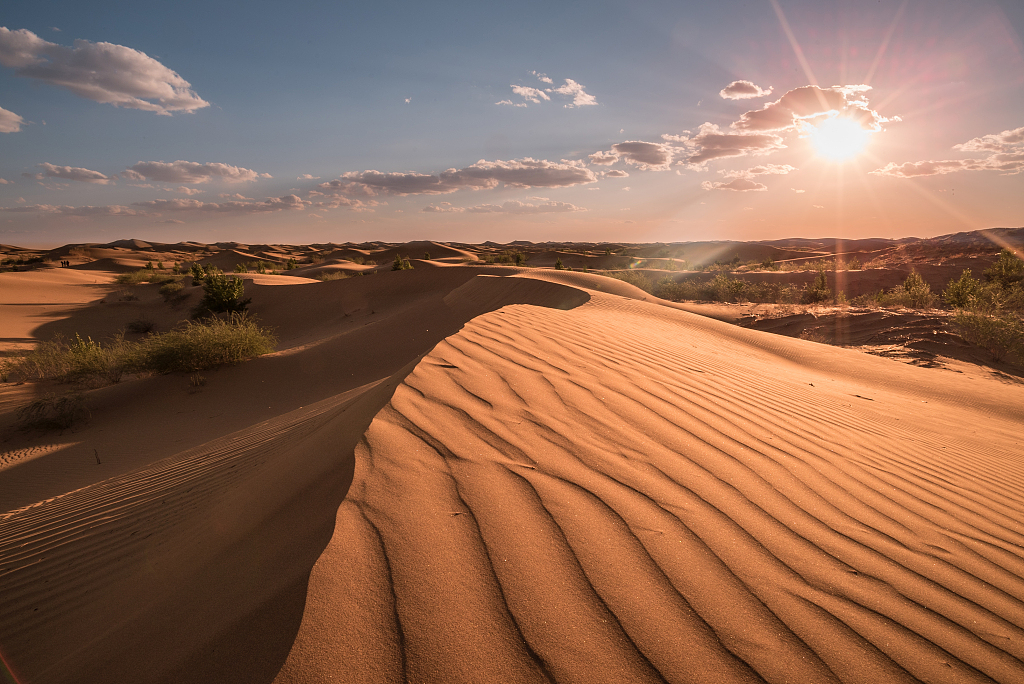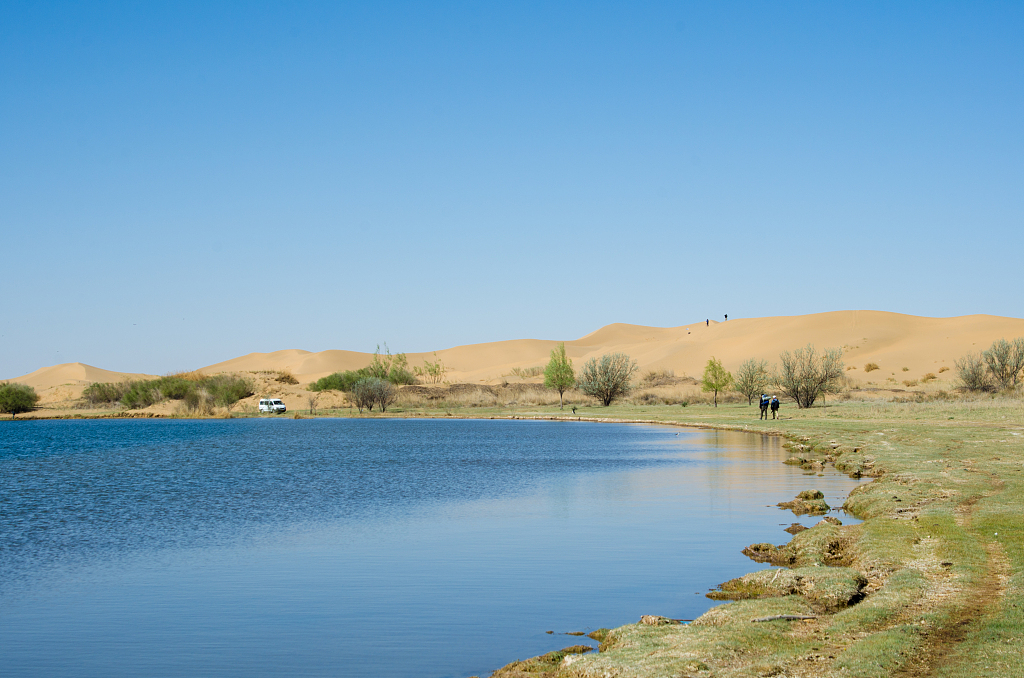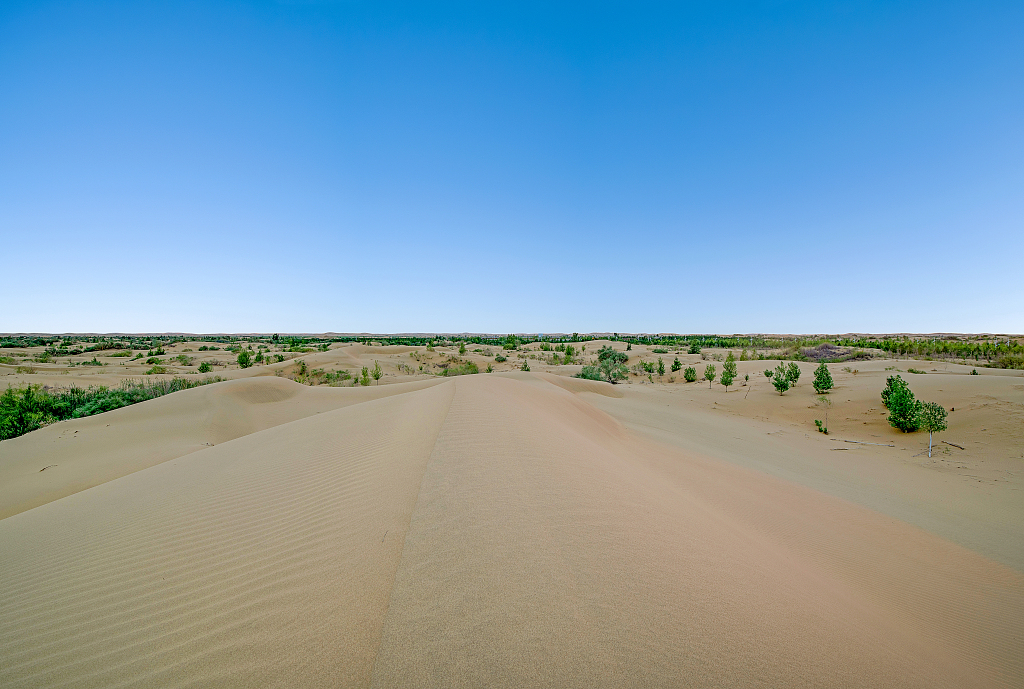The Yellow River is the second-longest river in China, and is one of the most well-known rivers in the country. Running through the Loess Plateau and other eroded areas, the river takes a vast majority of sediment to the water, and therefore it manifests yellow, hence the name.
Located in Ordos City of north China's Inner Mongolia Autonomous Region, the Yellow River travels 249 kilometers through the Hangjin Banner. In the eastern and western parts of Hangjin lies the seventh largest desert in China, Kubuqi, which has caused many problems for the surrounding villages and cities due to the desertification.

Scenery of the Kubuqi Desert. /VCG
Scenery of the Kubuqi Desert. /VCG
Jia Wenyi, 51, remembers his grandfather as the first group of workers against the desertification. In the early 1950s, his grandfather, together with some 20 other workers, carrying food, water and pickles walked their way deep into the desert to plant trees. Jia said, that was a tough time since there was no cars, highways or even wells for them to get water.
Based on the experience of the first generation, the second generation of workers, which Jia’s father belonged to, made huge progress. Compared to simply planting trees, they discovered it was better to plant rows of desert wormwood, which is a species of bush that can develop roots to hold the quicksand. In between the desert wormwood, they planted small trees like Salix cheilophila to further stabilize the sand, and gradually brought greenery to the barren land.
In 1985, Jia Wenyi became the third generation in Hangjin Banner to fight against desertification. To him, afforestation in the desert is never an one-time effort. Therefore, he and the other workers have been dedicated in the work, as more and more people joined the team.

Qixing Lake, a famous scenic spot in Kubuqi Desert. /VCG
Qixing Lake, a famous scenic spot in Kubuqi Desert. /VCG
In 1997, under the guidance of local government, people in Hangjin Banner built a 115-kilometer-long road that runs through the desert, which has greatly shortened the transit time. With the road, labor and seedling transportation became more convenient, and the area covered in green in Kubuqi Desert gradually became larger.

Bushes and trees in Kubuqi Desert. /VCG
Bushes and trees in Kubuqi Desert. /VCG
By now, one third of the desert, which with a total area of more than 18,600 square kilometers, has become an oasis, which testifies to the efforts of generations of workers.
About 'Addicted to nature conservation'
Biodiversity, climate change and environment topics are not new, but more and more people have devoted themselves to nature conservation. Some of them are rangers, guarding the forests and protecting local biodiversity; some of them work on desertification control; generations of them spent their lives changing the desert into a green land; some are scientists and researchers, they use the latest knowledge and methods to guide others for a shared future. From April 29 to May 4, CGTN Nature presents stories of those addicted to nature conservation.